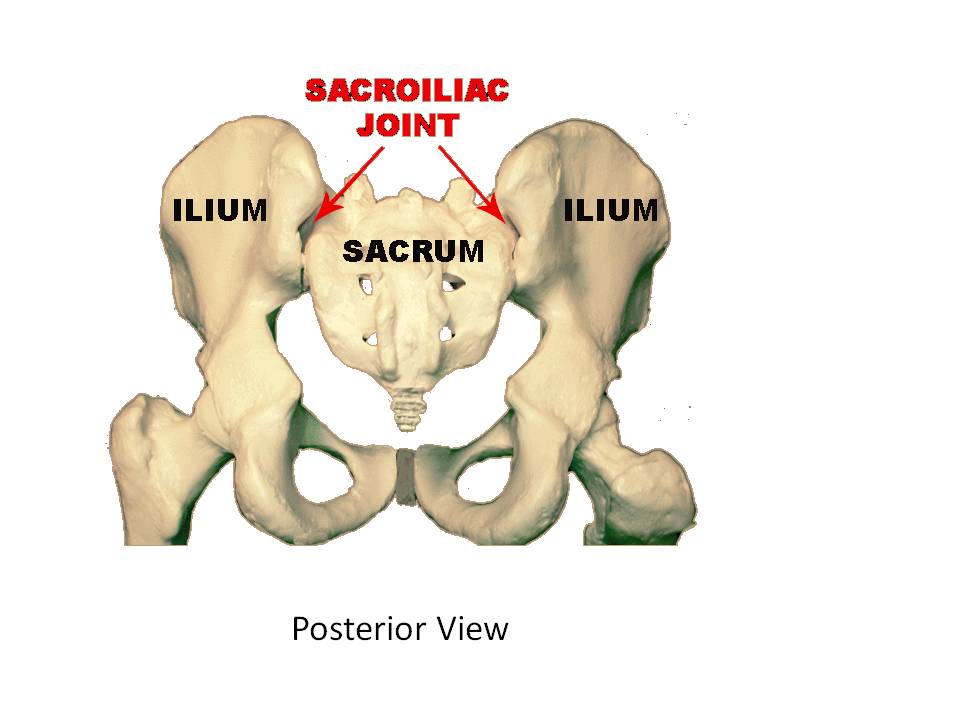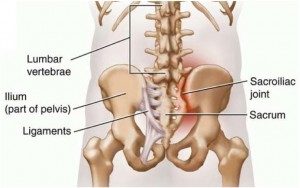 Issues involving one or both sacroiliac joints (SIJs) are often referred to as SI joint pain (SIJP) or sacroiliac joint dysfunction (SIJD). It is estimated that 30% of low back pain is caused by SIJD and it’s even more common in pregnant and post partum women. SIJP can be caused by either too much or not enough motion happening at the articular structures that make up the SIJ. The 2 bones that make up the SIJ are the sacrum and the ilium (see picture above). The ligaments that connect the 2 bones of the SIJ can also generate pain. SIJP can be felt in the low back and/or buttock area. Optimal function of the SIJs depends on optimal positioning and movement of 6 joints: both SIJs, L5-S1 articulation, pubic symphysis and both hip joints. Many
Issues involving one or both sacroiliac joints (SIJs) are often referred to as SI joint pain (SIJP) or sacroiliac joint dysfunction (SIJD). It is estimated that 30% of low back pain is caused by SIJD and it’s even more common in pregnant and post partum women. SIJP can be caused by either too much or not enough motion happening at the articular structures that make up the SIJ. The 2 bones that make up the SIJ are the sacrum and the ilium (see picture above). The ligaments that connect the 2 bones of the SIJ can also generate pain. SIJP can be felt in the low back and/or buttock area. Optimal function of the SIJs depends on optimal positioning and movement of 6 joints: both SIJs, L5-S1 articulation, pubic symphysis and both hip joints. Many 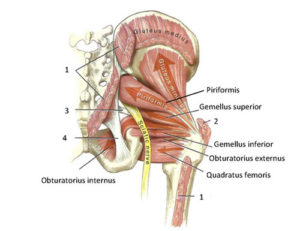 muscles attach to the sacrum and ilium and can be affected by dysfunction at the SIJ. In addition, the sciatic nerve travels under and sometimes through this area (see picture). Problems with these muscles can be perpetuated by SIJD and cause pain and other symptoms that radiate down the leg and sometimes into the foot (sciatica). One of the common disorders that will cause this type of pain pattern is piriformis syndrome (to be covered in a future BTF article).
muscles attach to the sacrum and ilium and can be affected by dysfunction at the SIJ. In addition, the sciatic nerve travels under and sometimes through this area (see picture). Problems with these muscles can be perpetuated by SIJD and cause pain and other symptoms that radiate down the leg and sometimes into the foot (sciatica). One of the common disorders that will cause this type of pain pattern is piriformis syndrome (to be covered in a future BTF article).
Typically, SIJP is worse when getting up from prolonged sitting and the pain usually affects one side. A collection of provocative tests are available to help confirm the diagnosis of SIJD.
Provocative tests:
Distraction
- The patient lies on their back and is asked to place their forearm under their lower back to maintain normal low back curvature and to support the lumbar spine. A pillow is placed under the patient’s knees. The doctor places their hands on the anterior and medial aspects of the patient’s left and right pelvic bones with arms crossed and elbows straight.
- A slow and steady posterior force is applied by leaning down toward the patient.
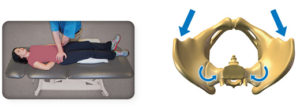
Thigh Thrust*
- The patient lies on their back with affected side hip flexed to 90 degrees. The pelvis is stabilized at the opposite pelvic bone with the hand of the doctor.
- The doctor stands on the same side as the flexed leg. The doctor provides steady increasing pressure through the axis of the thigh.
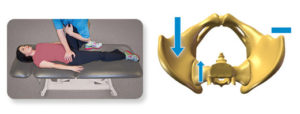
FABER – (Flexion, ABduction, External Rotation)
- The patient lies on their back as the doctor crosses the affected-side foot over the opposite-side thigh. The pelvis is stabilized at the opposite pelvic bone with the hand of the doctor.
- A gentle downward force is applied to the affected-side knee of the patient and is steadily increased, exaggerating the motion of hip flexion, abduction, and external rotation.
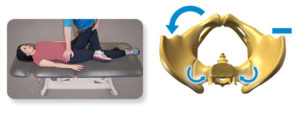
Compression*
- The patient is placed in a side-lying position, with the affected side up, facing away from the doctor, with a pillow between the knees.
- The doctor places a steady downward pressure through the anterior aspect of the lateral pelvis.
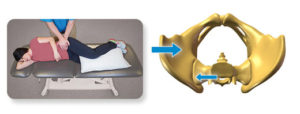
Gaenslen’s
- The patient lies on their back with the affected side leg near the edge of the table.
- The patient then draws the non-affected side leg into full flexion and holds the flexed knee. The doctor stabilizes the leg with their hand placed over the patient’s hand. This action keeps the pelvis on the non-tested side in a slightly posterior and stable position during the maneuver.
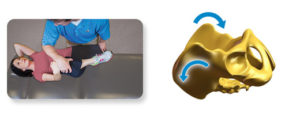
To get an accurate diagnosis of SIJD, at least 3 of the 5 tests should be positive for SIJP, with the Thigh Thrust Test and Compression Test being the most reliable.
The SIJs are inherently stable and their design gives them the ability to safely transfer very high compressive loads under normal conditions. Patients undergoing lumbar fusion surgery will likely have a resulting increase in SIJ motion and stress, as these joints are just distal to the fused segments. Also unilateral SIJ fusion has been documented to cause an undesirable strain on the contralateral SIJ.
For optimal stability of the SIJs, the iliums on each side of the sacrum need to be in optimal position. Some patients will complain that they feel one or both SIJs slipping, moving, rubbing or going out of place. This could suggest that the optimal position of the SIJs has been lost. This can contribute to SIJP and the patient will seek therapy from typically a physical therapist or chiropractor. A chiropractor can use joint manipulation techniques to improve motion at the SIJs. In the case of an SIJ that isn’t moving enough, this can often provide the solution, combined with rehabilitative exercises, that ends the SIJD. For the SIJ that moves too much, a more comprehensive approach needs to be taken in order to provide stability for the SIJD. For a thorough evaluation related to SI joint issues, please call us at 310-534-1900 or email info@backtofunction.com.
Part 2 of this article will discuss a detailed analysis of SIJ instability.
References:
- http://www.spine-health.com/education-centers/sacroiliac-joint-disorders/physicians/comprehensive-diagnostic-approach-sacroiliac
- Boyle, Kyndall. Conservative Management for Patients with Sacroiliac Joint Dysfunction. www.intechopen.com


